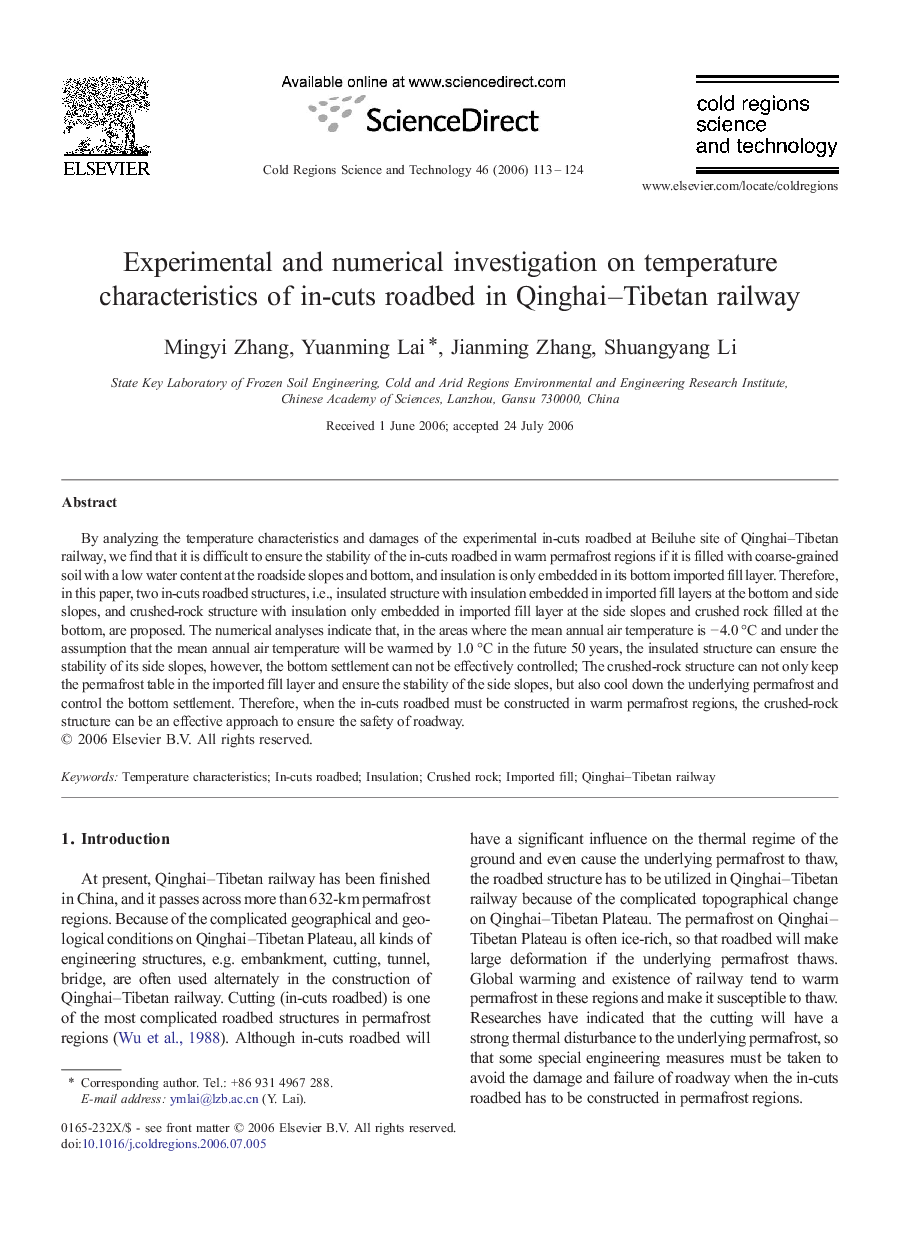| Article ID | Journal | Published Year | Pages | File Type |
|---|---|---|---|---|
| 4676697 | Cold Regions Science and Technology | 2006 | 12 Pages |
By analyzing the temperature characteristics and damages of the experimental in-cuts roadbed at Beiluhe site of Qinghai–Tibetan railway, we find that it is difficult to ensure the stability of the in-cuts roadbed in warm permafrost regions if it is filled with coarse-grained soil with a low water content at the roadside slopes and bottom, and insulation is only embedded in its bottom imported fill layer. Therefore, in this paper, two in-cuts roadbed structures, i.e., insulated structure with insulation embedded in imported fill layers at the bottom and side slopes, and crushed-rock structure with insulation only embedded in imported fill layer at the side slopes and crushed rock filled at the bottom, are proposed. The numerical analyses indicate that, in the areas where the mean annual air temperature is − 4.0 °C and under the assumption that the mean annual air temperature will be warmed by 1.0 °C in the future 50 years, the insulated structure can ensure the stability of its side slopes, however, the bottom settlement can not be effectively controlled; The crushed-rock structure can not only keep the permafrost table in the imported fill layer and ensure the stability of the side slopes, but also cool down the underlying permafrost and control the bottom settlement. Therefore, when the in-cuts roadbed must be constructed in warm permafrost regions, the crushed-rock structure can be an effective approach to ensure the safety of roadway.
